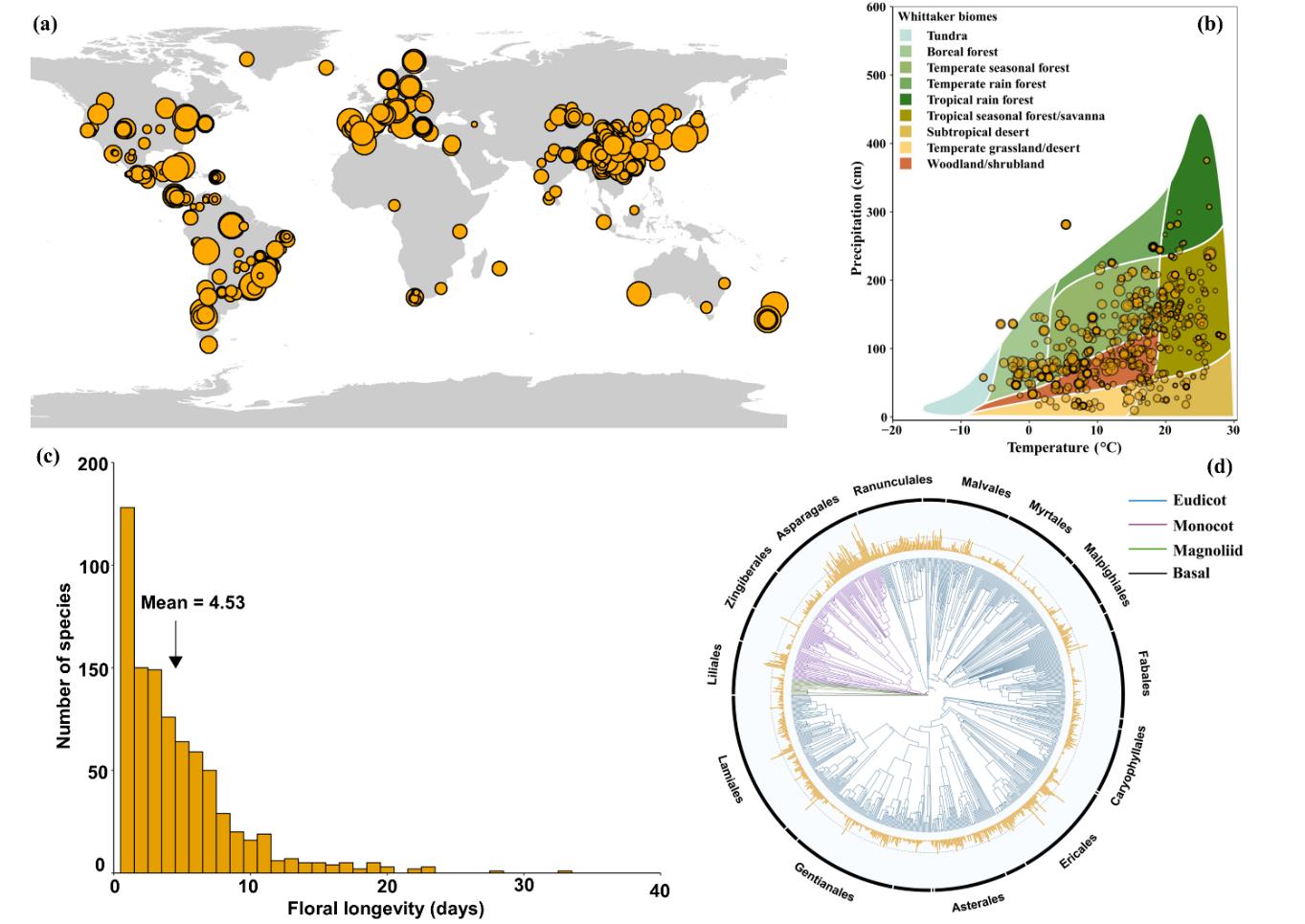Using published data on floral longevity from 818 angiosperm species, researchers from the institute present the first global quantification of the latitudinal pattern of floral longevity and the relationships between floral longevity and a range of biotic and abiotic factors.
According to the study, the environmental temperature during the flowering season showed the highest influence on the longevity of flowers. In areas of high temperature, drought, and strong solar radiation, plants tend to have shorter floral lives.
Continuous global warming and extreme high-temperature events may shorten the flower life of plants, and then aggravate the insufficient pollination of plants, resulting in changes in plant population or geographical distribution, said the study.
The research results provide a reference for the conservation of plant diversity under global climate change.
The study was recently published in the journal New Phytologist. (Xinhua)





